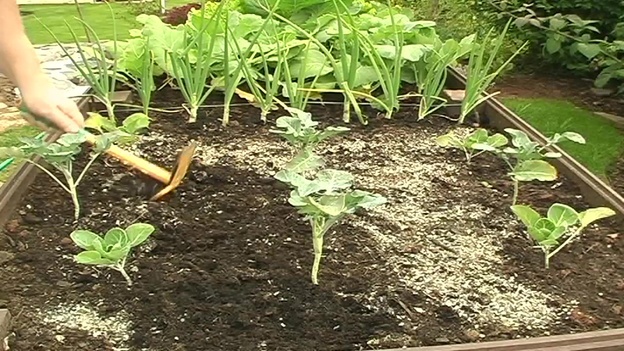VIDEO: Using horn shavings as fertilizer
Horn as fertilizer
Cattle horns and hooves are not thrown away in organic farming. Rather, horn waste is shredded and sold as organic fertilizer. Process horn chips as fertilizer for garden beds or balcony plants.
The providers sieve the horn waste after it has been shredded. Particles larger than five millimeters are sold as horn shavings (horn meal). Horngrass consists of grains that are between one and five millimeters in size. The smaller grains are horn meal.
The organic material has a nitrogen content (N) between 12 and 15 percent. Potassium is in the form of potassium oxide (K2O) and phosphorus as phosphorus pentoxide (P2O5) before. The proportion of potassium and phosphorus is one percent each. So horn is an organic nitrogen fertilizer.
Horn fertilizers appreciate organic farmers and allotment gardeners because of their organic origin. The rumor of the BSE risk has now been refuted. Horn products are for your flower beds and Balcony plants completely harmless as they do not contain any nerve tissue.
Advantages and disadvantages of horn fertilizer
Horn meal, horn meal and horn meal differ only in the grain size. The smaller the grains, the faster the soil absorbs the material. Otherwise there are no differences between the products.
Anyone looking for alternatives to artificial fertilizers will quickly become aware of horn meal. It ...
| advantages | disadvantage |
|---|---|
| organic origin | low phosphate content |
| contains a lot of nitrogen | low potassium content |
| does not change the pH of the soil | Composition is different |
| Nutrients are not in the form of salts | Effect depends on the temperature of the soil |
| Over-fertilization is hardly possible | Moisture and ventilation of the floor necessary |
Fertilization with horn shavings
The best time to fertilize with chips is during planting. Always dig the shavings into the planting hole. Semolina and flour are suitable for supplying the plants with nutrients during the growth phase. Please note the following:
Sprinkle horn: Bring horn semolina or flour generously into the bedding soil.



Container plants need other fertilizers: Horn shavings are only conditionally suitable for the supply of Houseplants. Here the abundance of soil organisms is missing and the effect of the nutrient supply for your plants remains inadequate.



Tip: Enrich the compost heap with the shavings. They encourage rotting and increase the nitrogen content of your compost. This is also ideal for fertilizing indoor plants. Horn is an excellent slow release fertilizer provided the soil is warm and moist.
